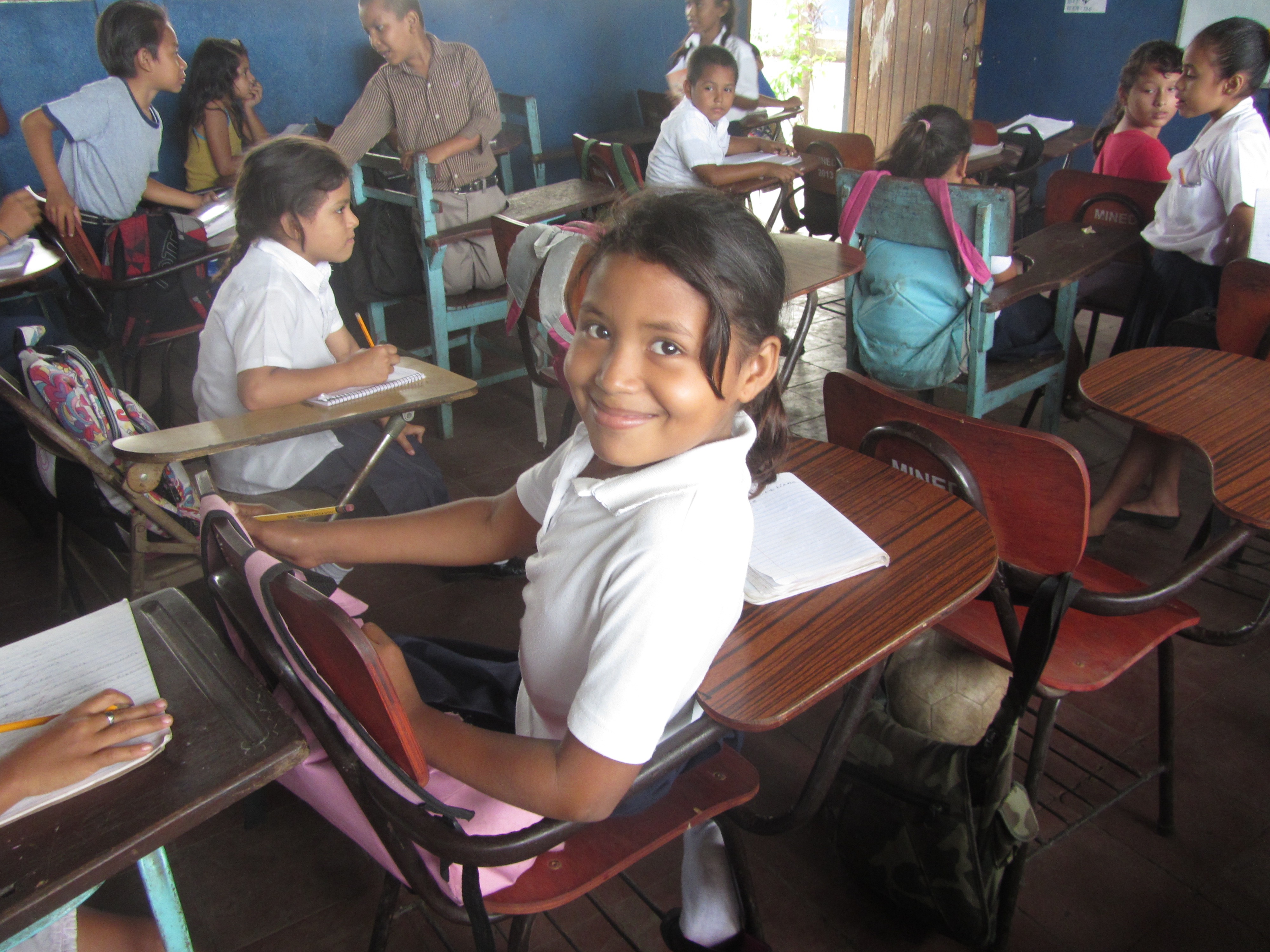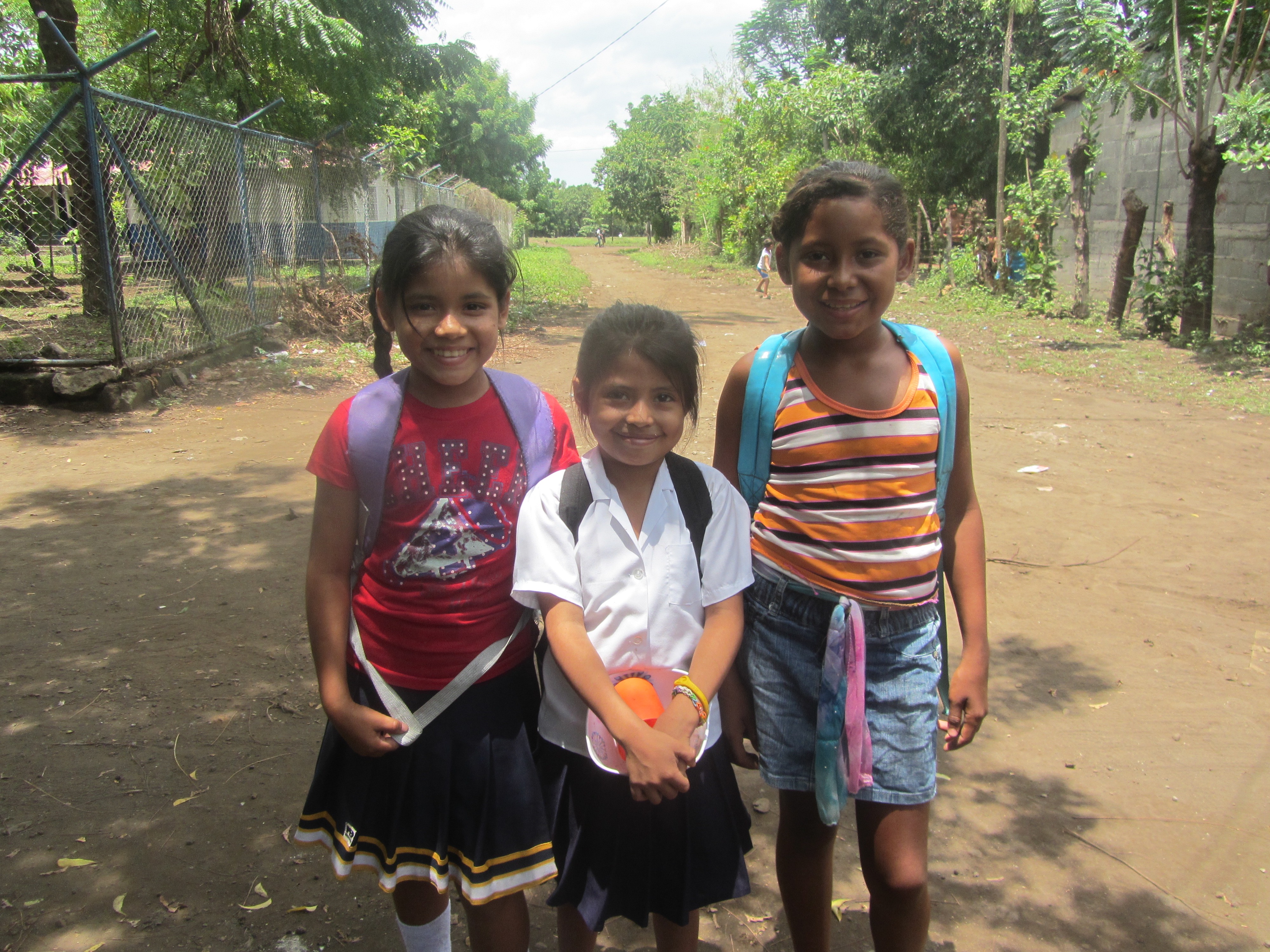 Many of you have been sponsoring students here in Chichigalpa for years, but may still wonder what school is like here in Nicaragua. Here is a breakdown for you of a typical school year.
Many of you have been sponsoring students here in Chichigalpa for years, but may still wonder what school is like here in Nicaragua. Here is a breakdown for you of a typical school year.
School begins in February (usually the second week) and finishes at the end of November. The students have a week off for Holy Week and another in July for the semester break. Graduations are always held in December.
All students attend preschool, elementary school, and secondary school. Preschool has 3 levels that are separated by age: 3-year old class, 4-year old class and 5-year old class. You don’t have to attend all three years. Whatever age a student is when they begin preschool, they will start with their age group. Preschool mostly focuses on learning numbers 1-10, vowels, and colors. There is also a lot of time for drawing and play. At the end of preschool, students celebrate their preschool graduation.
Elementary school is first-sixth grades. Every village where your students live, has its own preschool and elementary school. Most elementary school students attend school only in the mornings 8-12 (although there are some elementary schools that have morning and afternoon sessions).  The reason that these students only attend school half of the day is that the majority of elementary schools either double as a high school in the afternoon or are small enough that they need to have some grades in the morning and some in the afternoon to accommodate all of their students. Your student will celebrate his/her graduation from elementary school after 6th grade. For many of our students, this graduation is a major milestone. Many of our 6th grade graduates are the first person in their family to learn to read or the first to complete elementary school.
The reason that these students only attend school half of the day is that the majority of elementary schools either double as a high school in the afternoon or are small enough that they need to have some grades in the morning and some in the afternoon to accommodate all of their students. Your student will celebrate his/her graduation from elementary school after 6th grade. For many of our students, this graduation is a major milestone. Many of our 6th grade graduates are the first person in their family to learn to read or the first to complete elementary school.
Then students move on to secondary school. There are 5 years of secondary school (grades 7-11). At the end of their 5th year students celebrate their high school graduation. Most high school students attend school in the afternoons from 12:30-5:30 (although some students, including all of our Santa Matilde students, study in the mornings). Most high schools are in Chichigalpa and require students to walk, bike, or ride the bus into town depending on where they live in. The transition from elementary school to secondary is very difficult for many students. In secondary school, they are studying new subjects such as English, history, and geography. As they move into higher grades they will also study Physics, Chemistry, Biology, Economics, Sociology, and Philosophy. Most of our students are the first generation in their family to graduate from secondary school. This is a huge accomplishment for them and we love to celebrate their success! A secondary school diploma opens doors for students to find local jobs outside of the sugar cane fields or other farms. Even jobs at the local grocery store require a high school diploma. Reaching this milestone gives are students the opportunity to create a better future for themselves and their families.
As they move into higher grades they will also study Physics, Chemistry, Biology, Economics, Sociology, and Philosophy. Most of our students are the first generation in their family to graduate from secondary school. This is a huge accomplishment for them and we love to celebrate their success! A secondary school diploma opens doors for students to find local jobs outside of the sugar cane fields or other farms. Even jobs at the local grocery store require a high school diploma. Reaching this milestone gives are students the opportunity to create a better future for themselves and their families.

How Does the School Year Work in Nica?
School begins in February (usually the second week) and finishes at the end of November. The students have a week off for Holy Week and another in July for the semester break. Graduations are always held in December.
All students attend preschool, elementary school, and secondary school. Preschool has 3 levels that are separated by age: 3-year old class, 4-year old class and 5-year old class. You don’t have to attend all three years. Whatever age a student is when they begin preschool, they will start with their age group. Preschool mostly focuses on learning numbers 1-10, vowels, and colors. There is also a lot of time for drawing and play. At the end of preschool, students celebrate their preschool graduation.
Elementary school is first-sixth grades. Every village where your students live, has its own preschool and elementary school. Most elementary school students attend school only in the mornings 8-12 (although there are some elementary schools that have morning and afternoon sessions). The reason that these students only attend school half of the day is that the majority of elementary schools either double as a high school in the afternoon or are small enough that they need to have some grades in the morning and some in the afternoon to accommodate all of their students. Your student will celebrate his/her graduation from elementary school after 6th grade. For many of our students, this graduation is a major milestone. Many of our 6th grade graduates are the first person in their family to learn to read or the first to complete elementary school.
The reason that these students only attend school half of the day is that the majority of elementary schools either double as a high school in the afternoon or are small enough that they need to have some grades in the morning and some in the afternoon to accommodate all of their students. Your student will celebrate his/her graduation from elementary school after 6th grade. For many of our students, this graduation is a major milestone. Many of our 6th grade graduates are the first person in their family to learn to read or the first to complete elementary school.
Then students move on to secondary school. There are 5 years of secondary school (grades 7-11). At the end of their 5th year students celebrate their high school graduation. Most high school students attend school in the afternoons from 12:30-5:30 (although some students, including all of our Santa Matilde students, study in the mornings). Most high schools are in Chichigalpa and require students to walk, bike, or ride the bus into town depending on where they live in. The transition from elementary school to secondary is very difficult for many students. In secondary school, they are studying new subjects such as English, history, and geography. As they move into higher grades they will also study Physics, Chemistry, Biology, Economics, Sociology, and Philosophy. Most of our students are the first generation in their family to graduate from secondary school. This is a huge accomplishment for them and we love to celebrate their success! A secondary school diploma opens doors for students to find local jobs outside of the sugar cane fields or other farms. Even jobs at the local grocery store require a high school diploma. Reaching this milestone gives are students the opportunity to create a better future for themselves and their families.
As they move into higher grades they will also study Physics, Chemistry, Biology, Economics, Sociology, and Philosophy. Most of our students are the first generation in their family to graduate from secondary school. This is a huge accomplishment for them and we love to celebrate their success! A secondary school diploma opens doors for students to find local jobs outside of the sugar cane fields or other farms. Even jobs at the local grocery store require a high school diploma. Reaching this milestone gives are students the opportunity to create a better future for themselves and their families.
Tags: